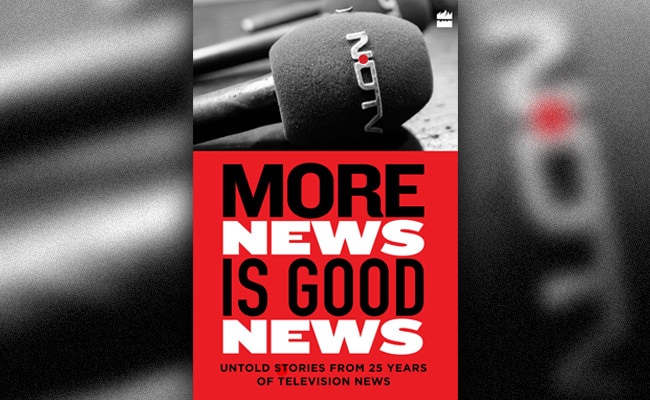
This is an excerpt from Prannoy Roy's chapter in a new book about NDTV and 25 years of television journalism, called More News is Good News. Order your copy on Amazon now.
Almost by definition, the path to making profits for a news organization is littered with compromises that change the nature of journalism, often so that it can no longer be recognized as a news channel. In the quest for profits in the overcrowded market of news channels in India, several choices are possible and different channels have chosen different routes, but the greater the success with any one of these routes, the more the nature of news journalism changes.
The first and most popular option is to go tabloid and gain eyeballs. Virtually every single Hindi news channel in India today is grotesquely tabloid. It all began after Murdoch's Star News split with NDTV. For a few years, Star did not do well. It was a serious news channel but was making losses as a result of low viewership. Star News decided to go tabloid. Seeing the success of tabloid news, virtually every Hindi news channel turned tabloid. I recall what I think is the lowest point so far when one Hindi channel anchor (not Star News) twirled her hair with her forefinger, looked into the camera and said, 'Break ke baad aapko ek rape dikhayenge' (After the break we will show you a rape).
But why blame Hindi channels? With competition and the rush for eyeballs, tabloidization is a global trend, but more than that, it should be seen as the death of good journalism. Forget the usual suspects, it is disturbing to see even the wonderful National Geographic and Discovery channels going down a slippery slope with many programmes designed to titillate by using titles containing sex and violence.
India has an added problem with tabloid Hindi news channels. The advertisers, the agencies, the CEOs and marketing heads do not watch Hindi news. They almost universally watch English news channels, so all decisions on advertising rates and expenditure are based solely on the number of eyeballs, not on the quality of the channel, because nobody has watched any Hindi channel. So, unlike in the UK, where a serious newspaper gets a much higher advertising rate per eyeball than a tabloid, no such stratification exists in India. I don't need to state the obvious that going tabloid in the quest for profits changes the nature of the beast, destroying journalism. I can honestly report that it is widely accepted that the only Hindi news channel in India that is not tabloid is NDTV India and I must also report that the channel is making a loss!

Cover of NDTV's book More News is Good News: Untold Stories from 25 Years of Television News
The other option to going tabloid, and it's not mutually exclusive, is to fiddle the ratings. Virtually every city in India has a 'ratings consultant' who, for a relatively small fee, will ensure higher ratings for any channel. The method is simple: the consultant gets to know the homes where the people-meters that measure viewership are located. These are meant to be anonymous homes, but the consultant manages to find out addresses. He visits the people-meter homes, gives them a brand-new 60-inch plasma TV and says, 'Watch whatever you like on this lovely big TV, but on the TV attached to the people-meter, you must watch this list of channels.' The family also gets an additional reward at the end of the year if they've done what they were asked to do efficiently. In fact, Nielsen sent out their global head of security to India and, after a four-month elaborate investigation, he said, 'I have never seen as much corruption of the Nielsen system anywhere else in the world.'
There are many other ways apart from going tabloid or fiddling ratings, which some channels do, to make profits - like blackmail and extortion, an accusation against the media in Britain too. In India, there is also the widespread phenomenon of 'paid news', where newspapers ask companies or politicians to pay for editorial space and it's not made clear to the reader that this is an advertorial. Sometime ago we were visited by a regional editor of a major newspaper chain. She wanted to leave her newspaper and work with NDTV. When we asked her why, she said, 'I don't really mind paid news when it comes to entertainment, I have done that for years, but last week when I had to put a positive article about a dodgy medical product on our front page, I decided I had to leave.' I needn't add that that newspaper chain is highly profitable. One thing is common in all these methods: so many compromises are made on the path towards making profits that the channels either lose their integrity or can no longer be called news channels.
India's media may not be perfect, but in the world's largest democracy, on balance our news media and its 'soft power', both television and print, have been working for democracy. As India's media has grown over the years, despite all the baggage, so far more news has been good news. So far we have seen the upside of unfettered journalism. But any strength taken too far becomes a weakness and our media appears to be hurtling towards its own regulatory cliff. It is at these critical moments that governments try to take control.
Track Latest News Live on NDTV.com and get news updates from India and around the world

